13 Plants That Bring Beautiful Butterflies to Your Garden
Creating a butterfly-friendly garden is easier than you think. By choosing the right plants, you can attract a variety of beautiful butterflies while adding vibrant colors to your outdoor space. These plants provide essential nectar and shelter, making your garden a perfect destination for butterflies to visit and thrive. Whether you have a small balcony or a large yard, there are plenty of options to suit every garden size and style.
This post may contain affiliate links, which helps keep this content free. Please read our disclosure for more info.
Milkweed (Asclepias)
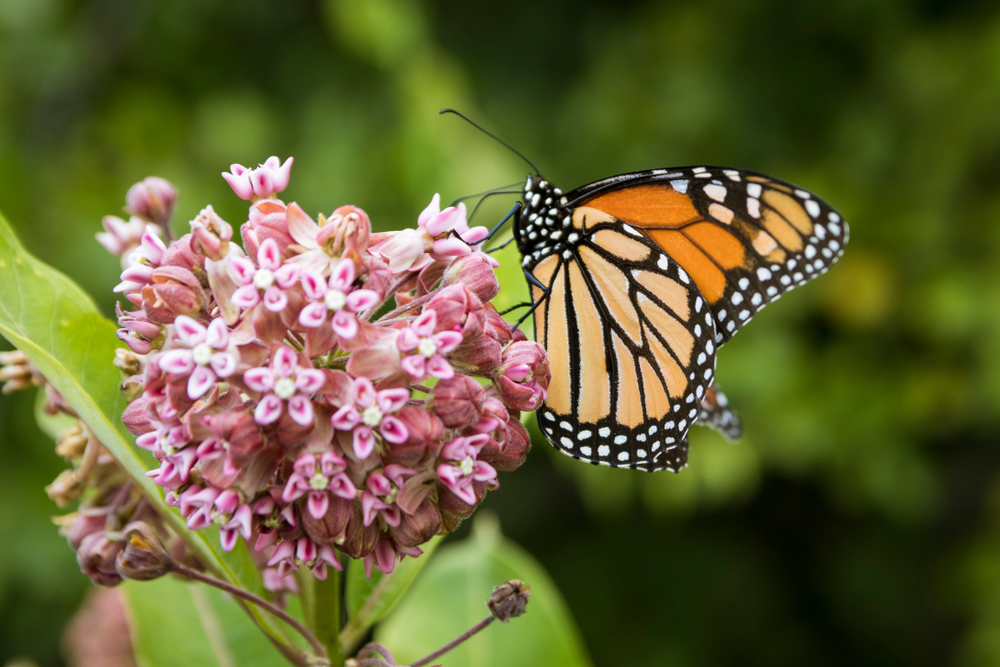
Milkweed is essential for any butterfly garden, especially if you want to attract monarch butterflies. The plant’s large clusters of pink, orange, or white flowers are not only a vibrant addition to your garden but also an abundant source of nectar for various butterfly species. Monarchs are particularly fond of milkweed, as it is the only plant their larvae feed on. This makes milkweed crucial in supporting the entire life cycle of monarch butterflies, from egg to adult.
In addition to providing food, milkweed’s tall stalks offer shelter for butterflies during their migration. The plant’s hearty nature means it thrives in dry, well-drained soils and full sun, making it suitable for a variety of garden conditions. It blooms throughout summer and into fall, ensuring that butterflies have a consistent nectar source when other flowers may have faded. Whether you are aiming to support monarchs or other local species, milkweed is an indispensable part of your butterfly garden.
Coneflower (Echinacea purpurea)
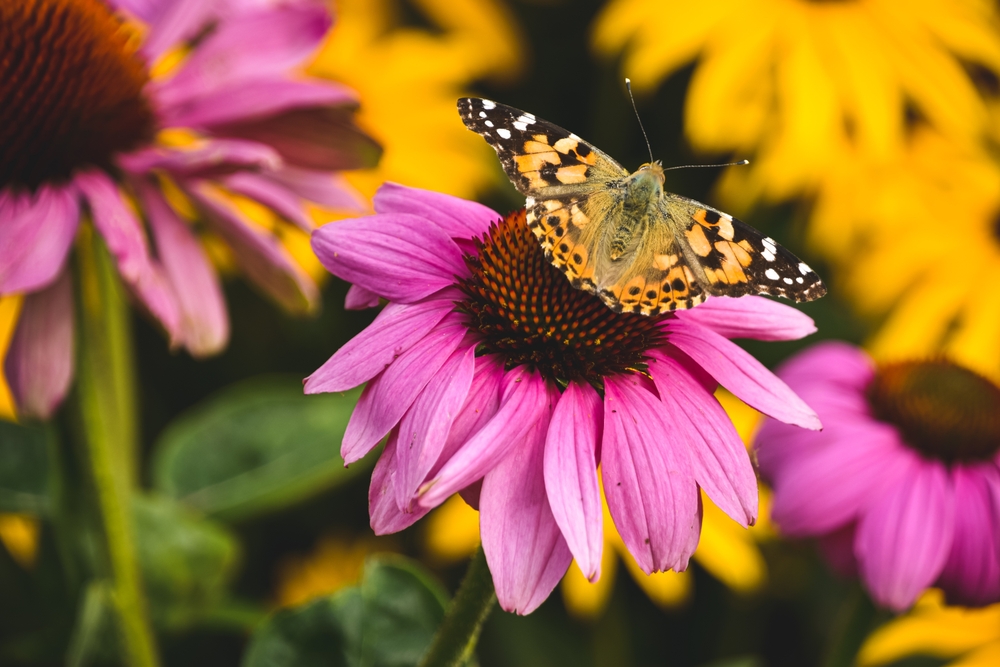
Coneflowers, with their vibrant purple petals and prominent central cones, are not only beautiful additions to any garden but also excellent for attracting butterflies. These plants are particularly favored by painted lady butterflies, who flock to them for their rich nectar. The cone-shaped flowers provide an easy landing spot for butterflies, allowing them to easily access the nectar while also offering a safe space for them to rest.
Coneflowers are hardy, easy to care for, and highly resilient to drought, making them a perfect plant for a variety of garden environments. They thrive in full sun and well-drained soils, but can tolerate a wide range of conditions. Their long-lasting blooms, which last from early summer to fall, ensure that butterflies have a reliable food source. With their bright colors and ability to attract pollinators, coneflowers are a must-have for butterfly enthusiasts looking to create a vibrant and active garden.
Lantana (Lantana camara)

Lantanas are known for their small, clustered flowers that come in a range of vibrant colors, such as red, orange, yellow, and purple. These color-packed flowers attract a wide variety of butterfly species, including swallowtails and skippers, who are drawn to their nectar-rich blooms. The plant’s abundance of tiny flowers in clusters makes it an irresistible option for butterflies, offering a continuous source of nectar throughout the blooming season.
Lantanas are hardy plants that thrive in sunny locations and can tolerate drought once established. They are low-maintenance and resistant to many pests and diseases, making them ideal for butterfly gardens. Lantanas also attract other pollinators, such as bees and hummingbirds, creating a lively ecosystem in your garden. Their long flowering season and compact growth make them an excellent choice for both small and large butterfly gardens, ensuring that butterflies are drawn to your space all summer long.
Butterfly Bush (Buddleia davidii)

As the name suggests, butterfly bush is a magnet for butterflies. The long, arching flower spikes of purple, pink, white, or red are rich in nectar, attracting various butterfly species, including the monarch, painted lady, and red admiral. The plant’s flowers are highly aromatic, which further draws butterflies from a distance. Butterfly bushes are particularly effective because they bloom profusely throughout the summer and fall, ensuring that butterflies have access to nectar when many other plants have stopped blooming.
Butterfly bush thrives in full sun and well-drained soil, making it easy to grow in a variety of garden settings. It can also handle drought conditions once established. The tall, bushy plant provides butterflies with not only food but also shelter from predators. Due to its fast-growing nature, butterfly bush can quickly fill empty spaces in your garden, providing a striking focal point while attracting a variety of butterflies.
Zinnias (Zinnia elegans)
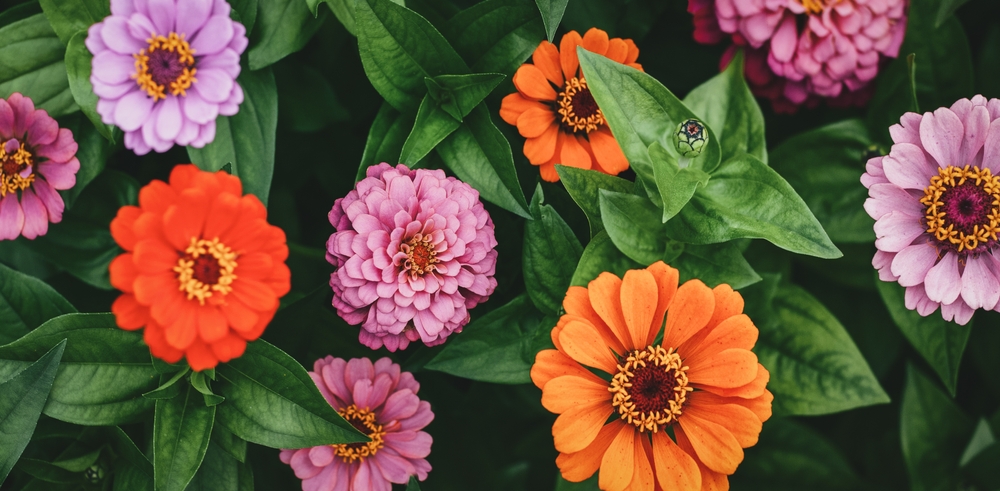
Zinnias are known for their bright, showy blooms, which come in an array of colors, including red, orange, pink, and yellow. These flowers are especially attractive to butterflies like the painted lady and American lady, who are drawn to their nectar-filled petals. The plant’s open flowers make it easy for butterflies to land and feed, while their vibrant colors make them stand out in any garden. Zinnias also have a long flowering period, providing a consistent food source for butterflies throughout the growing season.
Zinnias are easy to grow and thrive in full sun, making them perfect for butterfly gardens in a variety of climates. They are also drought-tolerant once established and can be grown in almost any soil type. Their low-maintenance nature and long-lasting blooms make them an excellent addition to any garden looking to attract butterflies. Whether in a container or a flower bed, zinnias provide a cheerful and effective nectar source for butterflies.
Bee Balm (Monarda didyma)
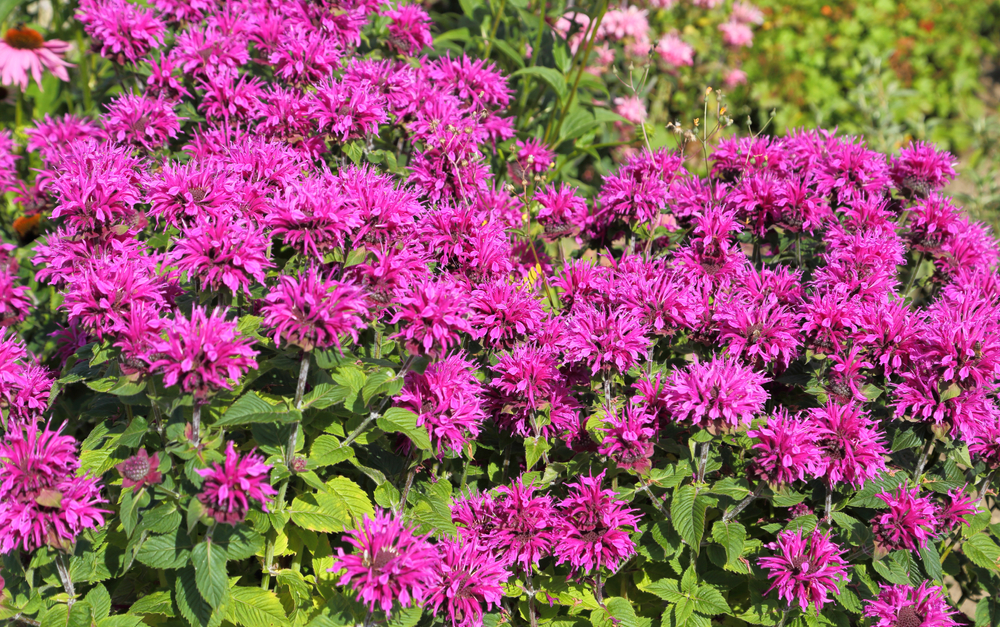
Bee balm, with its unique tubular flowers in shades of red, pink, and purple, is a favorite of many butterfly species. Its nectar-rich flowers attract butterflies such as the red admiral and monarch, who seek out the plant’s vibrant blooms. In addition to attracting butterflies, bee balm is also popular with bees and hummingbirds, making it a great plant for creating a pollinator-friendly garden. The plant’s aromatic foliage adds a pleasant fragrance to the garden, making it a sensory delight for both gardeners and pollinators.
Bee balm thrives in moist, well-drained soils and full sun, although it can tolerate partial shade. It is a low-maintenance plant that can be grown in a variety of conditions, making it an easy addition to any garden. Bee balm’s long-lasting blooms and ability to attract a range of pollinators make it a reliable and valuable choice for butterfly gardens. With its vibrant color and fragrant flowers, it is sure to draw butterflies to your garden year after year.
Lavender (Lavandula)
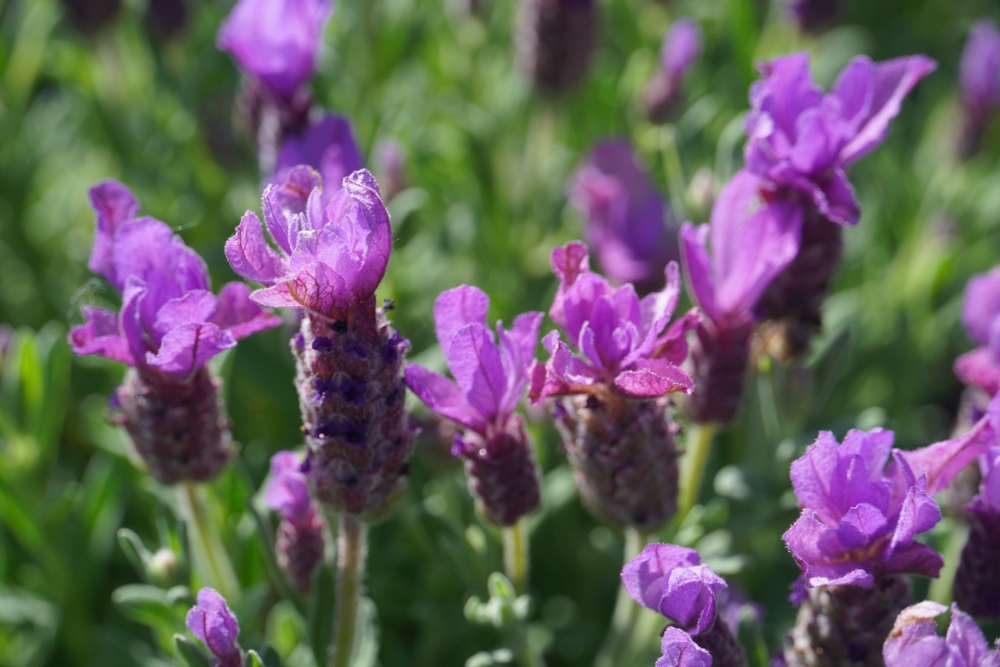
Lavender’s sweet fragrance and soft, purple flowers make it a favorite among butterflies, particularly the swallowtail. The small, tubular flowers of lavender are packed with nectar, providing a steady food source for butterflies during the summer months. Lavender is particularly attractive to long-tongued butterflies, who can easily access the nectar hidden deep within its flowers. In addition to butterflies, lavender also attracts bees and other pollinators, making it an excellent choice for creating a diverse pollinator-friendly garden.
Lavender thrives in well-drained, sandy soils and full sun, and it is highly drought-tolerant once established. Its compact growth and lovely fragrance make it a great addition to both small and large gardens. Lavender’s ability to attract butterflies, along with its low-maintenance care requirements, makes it a reliable plant for butterfly gardens. The plant’s long blooming season ensures that butterflies will have a consistent food source, while its soothing scent enhances the sensory experience of the garden.
Black-eyed Susan (Rudbeckia hirta)
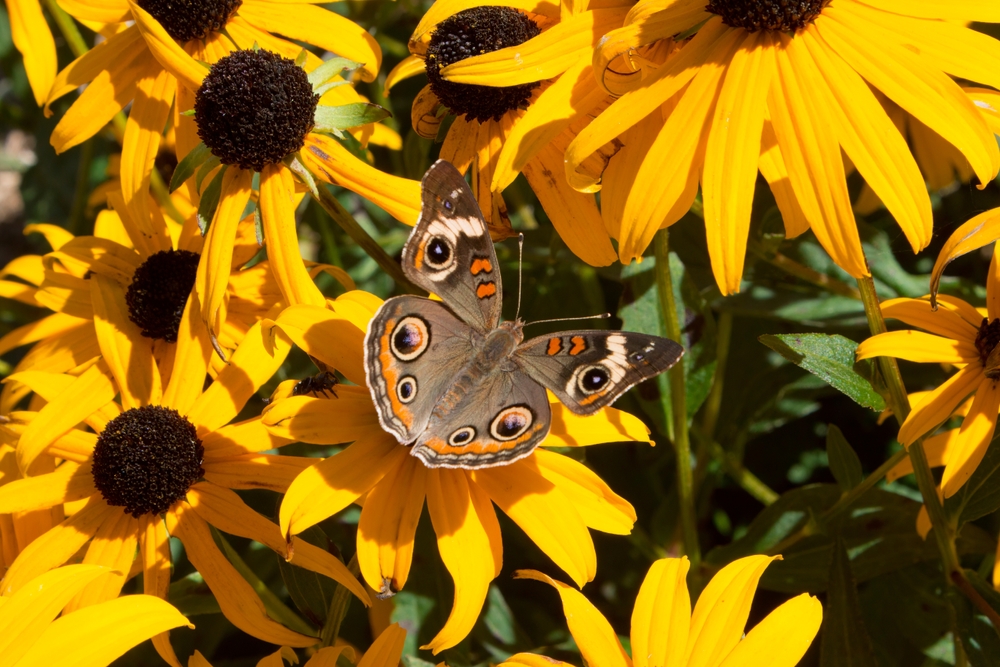
Black-eyed Susan’s bright yellow petals and dark centers make it one of the most eye-catching plants in the garden. These vibrant flowers are highly attractive to butterflies, particularly the painted lady and American lady, who seek out their nectar-rich blooms. The plant’s large, daisy-like flowers are easy for butterflies to land on and feed from. Black-eyed Susan’s long-lasting blooms provide a steady source of nectar from early summer until fall, making it a reliable food source for butterflies throughout the season.
Black-eyed Susan is a hardy, drought-tolerant plant that thrives in full sun and well-drained soils. Its ability to grow in various soil conditions and tolerate dry spells makes it an ideal choice for butterfly gardens in many climates. The plant’s simple beauty and ability to attract butterflies make it an essential addition to any garden. Whether planted in a border or as a focal point, black-eyed Susan is sure to bring butterflies to your garden.
Yarrow (Achillea millefolium)
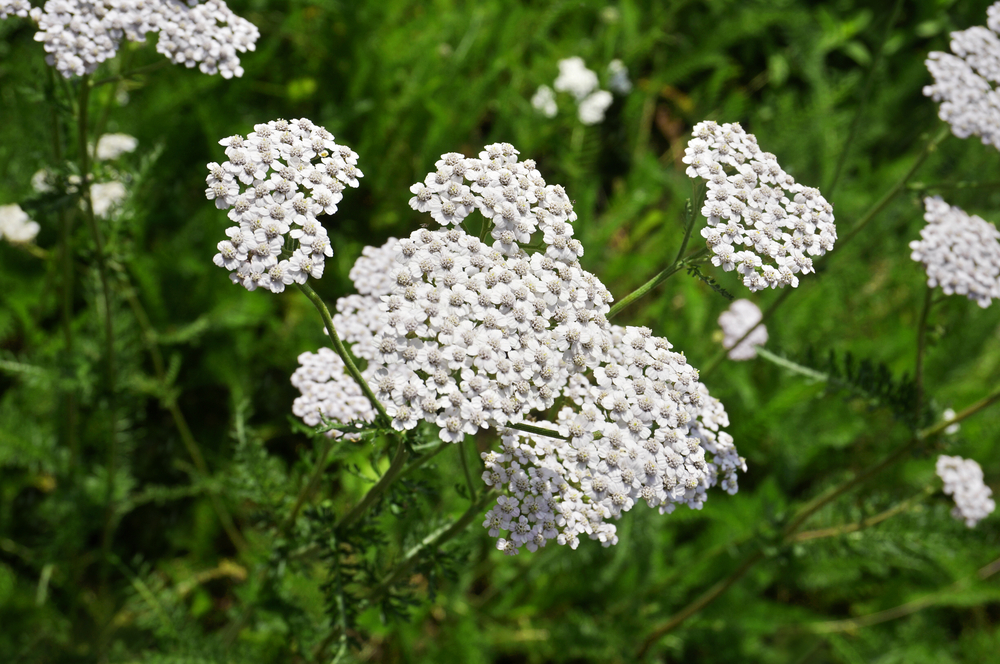
Yarrow’s flat-topped clusters of tiny flowers in shades of white, yellow, and pink provide a valuable nectar source for butterflies. The plant attracts a variety of butterfly species, including the painted lady and cabbage white, which are drawn to the plant’s abundant nectar. Yarrow is especially attractive to butterflies due to its large, umbrella-like flower heads, which offer plenty of landing space. The plant’s long flowering season ensures that butterflies have a consistent food source, even during dry spells when other plants may struggle to bloom.
Yarrow is a hardy, low-maintenance plant that thrives in full sun and well-drained soils. It is drought-tolerant once established and can grow in a variety of garden conditions. The plant’s ability to attract butterflies while requiring minimal care makes it an excellent choice for gardeners looking to create a butterfly-friendly space. Its attractive foliage and long-lasting blooms add beauty to the garden while supporting pollinators.
Verbena
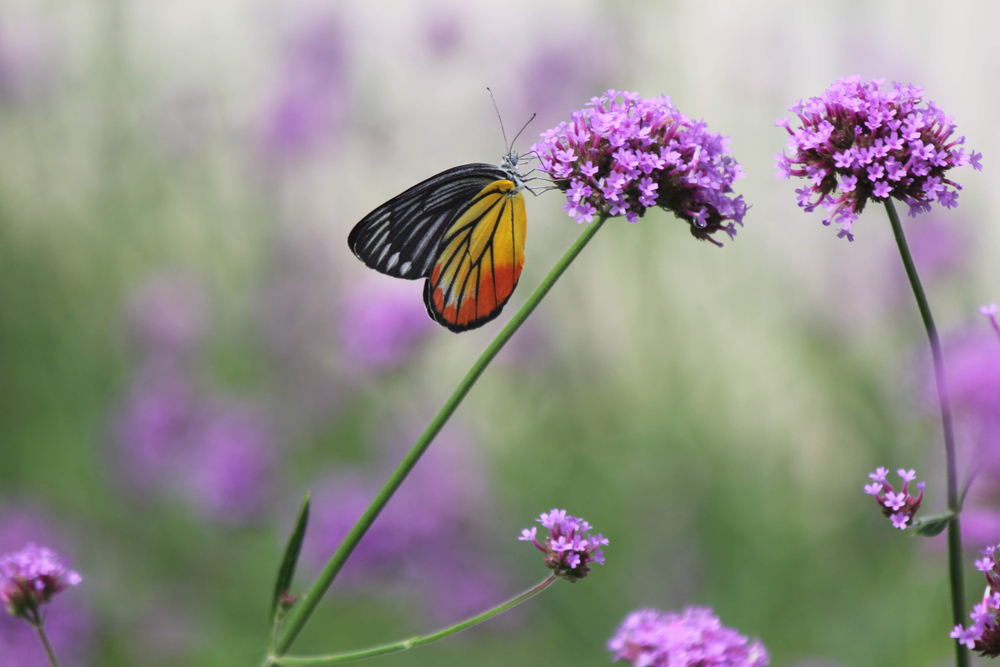
Verbena is known for its clusters of small, vibrant flowers that attract butterflies like the painted lady and monarch. The plant’s abundance of nectar makes it a favorite among butterflies, who are drawn to its long-lasting blooms. Verbena thrives in full sun, and its long blooming season ensures that butterflies have a steady food source from spring to fall. The plant’s compact growth and striking colors make it a versatile option for any butterfly garden, whether planted in a container or a flower bed.
Verbena’s low-maintenance nature and ability to thrive in hot, sunny conditions make it an ideal choice for gardens in warmer climates. Its colorful flowers come in shades of purple, pink, red, and white, providing a visual treat for both gardeners and butterflies alike. Verbena’s ability to attract butterflies while requiring little care makes it a reliable and valuable addition to any garden. Whether you are planting it as a border or as a filler in flower beds, verbena is sure to draw in butterflies.
Coreopsis (Coreopsis verticillata)
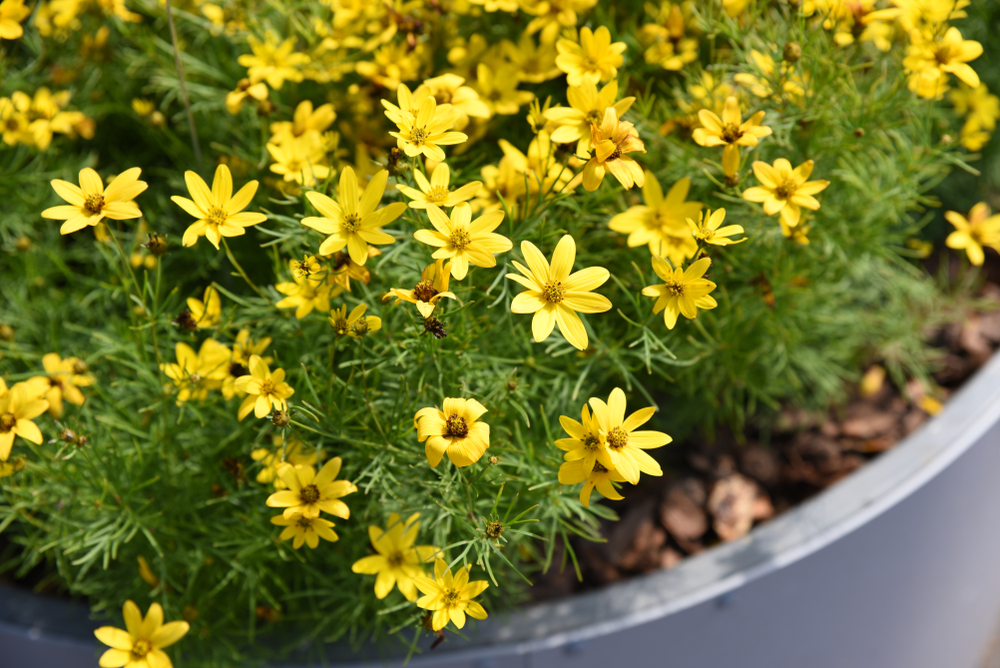
Coreopsis, or tickseed, is a bright and cheerful addition to any butterfly garden. Its yellow, daisy-like flowers are rich in nectar, making it a favorite of butterflies such as the sulphur and skipper. The plant’s long-lasting blooms provide a consistent nectar source throughout the growing season, ensuring that butterflies have a reliable food source. Coreopsis is particularly attractive to butterflies due to its large, open flowers that make it easy for them to land and feed.
Coreopsis is a hardy, drought-tolerant plant that thrives in full sun and well-drained soils. Its low-maintenance nature and ability to grow in a variety of soil types make it an excellent choice for gardeners looking to create a butterfly-friendly garden. The plant’s vibrant flowers and ability to attract butterflies make it an essential addition to any pollinator garden. With its easy care and long blooming season, coreopsis is sure to bring butterflies to your space year after year.
Astilbe
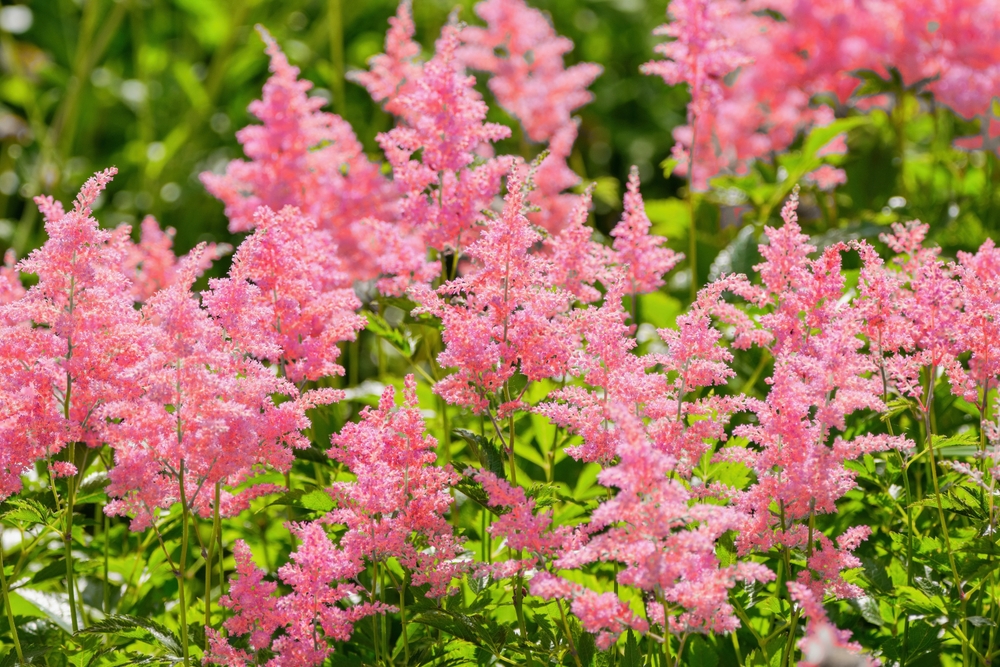
Astilbe is a perennial plant with feathery, plume-like flowers that attract butterflies, bees, and other pollinators. Its vibrant pink, red, or white flowers are rich in nectar, making it a great choice for attracting species like skippers and swallowtails. Astilbe is especially useful in shaded gardens where other nectar-rich plants may struggle to thrive. The plant’s ability to grow in moist, shaded conditions makes it a valuable addition to areas with less sunlight.
Astilbe’s long-lasting blooms provide a consistent food source for butterflies during the summer months. It is also a low-maintenance plant that requires minimal care once established. Astilbe’s feathery texture and bold colors add visual interest to the garden, while its ability to support pollinators makes it a key plant in a butterfly-friendly space. If you have a shaded area in your garden, astilbe is a great way to attract butterflies while adding color and texture.
Penstemon
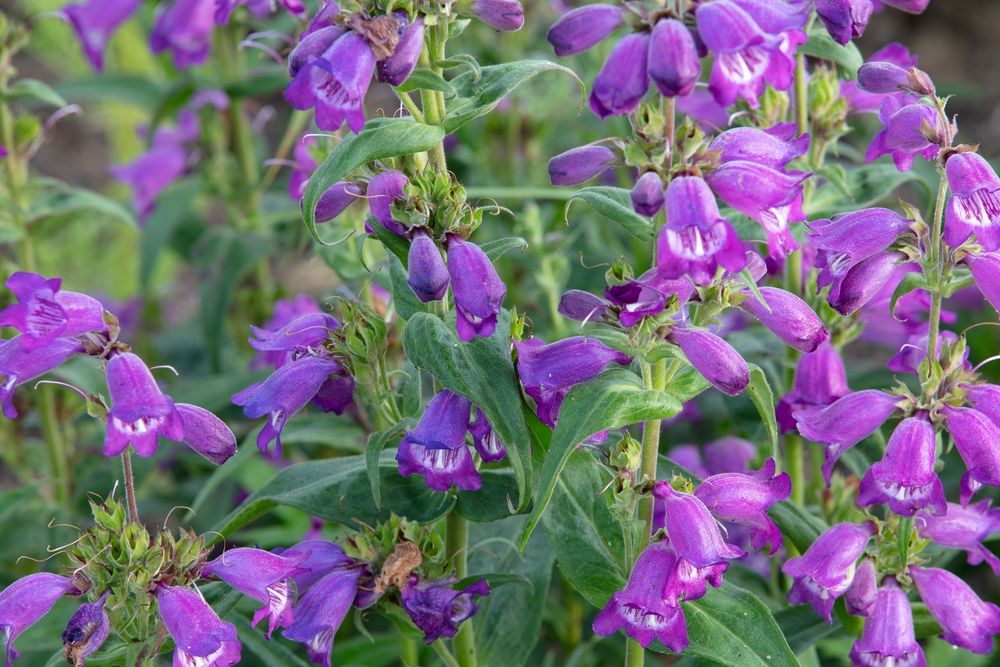
Penstemon, known for its tubular flowers in colors like red, pink, and purple, is highly attractive to butterflies, especially long-tongued species like the swallowtail. The plant’s flowers are packed with nectar, making them a favorite feeding spot for butterflies. Penstemon thrives in well-drained soils and full sun, making it a great choice for butterfly gardens in hot, dry regions. Its vibrant blooms and nectar-rich flowers ensure that butterflies have a steady food source throughout the growing season.
Penstemons are also known for their drought tolerance, which makes them an excellent addition to butterfly gardens in regions with less rainfall. The plant’s tubular flowers provide a unique feeding opportunity for butterflies, who find it easier to reach the nectar deep within the blossoms. Penstemon’s vibrant colors and ability to attract butterflies make it a valuable plant for any garden. Whether planted in clusters or as individual specimens, penstemons will undoubtedly draw butterflies to your space.
This article originally appeared on Avocadu.
